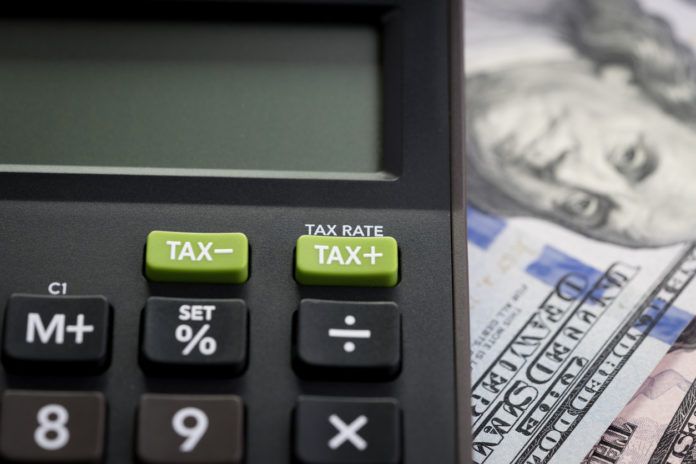
Amendment 1 was recently passed by the voters to remove what was becoming a very real opportunity for entrepreneurial tax assessors to tax energy infrastructure that was under development and construction around the state.
Historically, and usually, taxes are assessed once public property of any type has been constructed and is being used and useful. The announced billions in liquefied natural gas (LNG) facility development, which can have long development time periods, appears to have been too tempting for some tax assessors, leading to the recent constitutional amendment effort.
Had this amendment not passed, it would have led to numerous long-run negative impacts on the Louisiana economy.
First, Louisiana is a net energy consuming state—we have been, and will continue to be for the foreseeable future. Louisiana consumes far more energy than it produces within the four corners of the state, exclusively in its manufacturing activities.
This trend is becoming more pervasive as Louisiana’s energy economy re-tools. In-state crude oil production falls just about every year, with Haynesville’s natural gas production being the only in-state area pulling Louisiana’s exploration and production sector out of irrelevancy.
What crude oil production does occur is far offshore in federal waters, and most of Louisiana’s contribution to that crude oil production is on the support side of the business, not the bulk of the business development, engineering, construction, drilling and production activities.
Large energy-consuming industries are exceptionally capital-intensive since they are based upon a range of advanced technologies that reform a variety of hydrocarbons into commodity and intermediate chemicals and refined products.
The investment necessary to support these types of manufacturing activities starts at a low of around a few hundred million and can expand up to $25 billion per project—an amount comparable to the ExxonMobil ethane cracker that rejected Louisiana as an investment location, purportedly, because of these types of political and taxing uncertainties.
Louisiana has seen over $60 billion in energy infrastructure investment since 2011, all associated with energy-consuming industries, with another $50 billion to $60 billion in investment potentially to be developed.
If assessors were allowed to pursue their proposed “taxation before development” actions, more corporate suites in the energy business would question the merits of locating their investments and infrastructure in Louisiana.
This is no idle threat given the challenges of developing in this part of the world, particularly given the last tropical season.
Louisiana and Texas both face competition from the upper Midwest and Appalachia regions of the country for these new investments.
Second, Louisiana is transforming itself into an energy export economy. While we may not be the direct beneficiaries of the boom in unconventional crude oil and liquids production, we are the indirect beneficiaries in terms of the increasing midstream (transportation, processing and storage) and refining investments.
In 2011, the U.S. became a net exporter of refined product—largely due to recent refinery capacity investments that focus on processing “distillates” that include diesel, jet fuel and heating oils used extensively in Western Europe and Latin America.
These relatively newer refinery investments, and the new export activity facilitated by them, are heavily supported by facilities on the Gulf Coast, including in Louisiana.
Further, net crude oil exports have been increasing from the Gulf Coast at a rate of about 40% per year, and while most of this activity has been from the Houston and Corpus Christi area, the Louisiana Offshore Oil Port (LOOP) has announced plans to turn its historic import facility into one that can facilitate crude oil trade in both directions (both imports and exports).
Lastly, what about consumers and everyday households? Ignore for the moment the very real possibility that a taxing practice like the one removed by Amendment 1 could be applied to new residential construction.
While this could happen, that’s likely not what got the tax assessors’ attention: Instead, it was the billions upon billions of energy infrastructure development projects that go far beyond LNG export facilities. Consider, instead, another very important component of the energy value chain: electric and natural gas utilities and how changes in their cost structure ripple down to every industry, business and household in Louisiana.
Electric and natural gas utilities are capital-intensive sectors and because they are monopoly service providers, are typically regulated by state public service commissions, like the one we have in Louisiana. These utility regulators set utility rates based upon each utility’s costs: So as a utility’s costs increase, so too do its rates.
Consider that, right now, Entergy Louisiana is investing billions in new and refurbished power generation facilities to meet its customer needs over the next several decades.
These are very likely the same types of multibillion-dollar, multiyear projects that would have been eligible for the new levies envisioned by local property tax assessors under their potential “taxation under development” scheme.
Make no mistake: Amendment 1 was not an issue restricted to a handful of speculative LNG facilities.
The precedent that would have been set by allowing practices like this to be sustained would have been unparalleled and not limited to a “few” isolated projects, but would have applied to multiple billions of dollars in projects all around the state.
Policymakers, businesses and households need to be aware that allowing these types of opportunistic taxing practices to take hold threaten not only future economic development opportunities, but everyday household energy bills, and should be avoided.
David E. Dismukes is a professor and the executive director of the Center for Energy Studies at LSU. He holds a joint academic appointment in the department of environmental sciences, where he regularly teaches a course on energy and the environment.
This article was originally published in the fourth quarter 2017 edition of 10/12 Industry Report.







